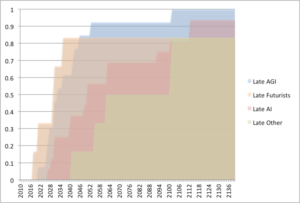
Interactive/in-page banners are changing the way businesses engage with their audience online. They provide a dynamic platform that combines visual appeal with user interaction, making it easier than ever to capture attention and drive conversions.
By utilizing various formats and interactive elements, these banners not only enhance user experience but also create memorable impressions that static advertisements simply cannot achieve. This makes them an essential tool in the digital marketing landscape.
Understanding Interactive/In-Page Banners
Interactive or in-page banners have become pivotal in the realm of online marketing, serving as dynamic tools that engage users and drive conversions. Unlike traditional static banners, these interactive advertisements allow users to interact in real-time, making the advertising experience more engaging and personalized. This increase in interactivity often leads to higher retention rates and a more memorable brand experience.
Types of Interactive Banners
Interactive banners come in various forms, each designed to achieve specific marketing goals. Here are some common types:
- Video Banners: Incorporating moving images, these banners capture attention quickly and can communicate messages more effectively than static images.
- Polls and Surveys: Engaging users with questions not only gathers valuable data but also increases interaction, keeping users on the page longer.
- Games and Quizzes: Fun and engaging, these formats encourage user participation and can lead to higher brand recall.
- Expandable Banners: These banners expand when clicked or hovered over, revealing more information or options, thus enhancing user engagement.
The benefits of using interactive banners over traditional static banners are manifold. They tend to have higher click-through rates, improved user engagement, and the capability to provide instant feedback and results, making them a preferred choice for many marketers.
The Role of Interactive Banners in Internet Marketing
Interactive banners are integral to a broader internet marketing strategy. They enhance user experience and create a more immersive environment that captures audience interest. When effectively integrated into a website, they can lead to increased traffic and conversions.
Integrating Interactive Banners into Websites
To effectively incorporate interactive banners into websites, consider the following methods:
- Placement: Position banners in high-visibility areas like headers or sidebars to maximize exposure.
- Responsive Design: Ensure banners are optimized for all devices, providing a seamless experience for desktop and mobile users.
- Call-to-Action: Use clear and compelling calls-to-action to drive user engagement and conversions.
Interactive banners significantly impact user engagement and conversion rates. Studies have shown that users are more likely to interact with dynamic content, which can lead to an increase in sales and customer loyalty.
Affiliate Revenue Generation with Interactive Banners
Interactive banners are a powerful tool for driving affiliate revenue. They not only captivate attention but also encourage user interaction, leading to higher conversion rates for affiliate offers.
Successful Affiliate Programs Using Interactive Banners
Several successful affiliate programs have effectively utilized interactive banners to boost their revenue. For instance:
- Amazon Associates: Their interactive banners often feature product reviews, ratings, and dynamic pricing, encouraging clicks and conversions.
- ShareASale: Many merchants on this platform use quizzes and polls in their banners to drive engagement and sales.
Best practices for optimizing interactive banners for affiliate marketing include ensuring clarity in messaging, using eye-catching visuals, and providing a clear pathway for users to follow through to the affiliate offer.
Interactive Banners and Online Auctions
Interactive banners can significantly enhance the user experience in online auctions, making the bidding process more engaging and dynamic.
Incorporating Interactive Elements in Auction Platforms
To enrich the auction experience, consider the following techniques:
- Live Updates: Display real-time bidding status or countdown timers to create urgency.
- User Polls: Engage users by asking for their opinions on item valuations or bidding strategies.
Dynamic banners influence bidder participation and activity by creating a sense of excitement and urgency, encouraging users to place bids more frequently.
Utilizing Interactive Banners in Audio Streaming Platforms

Interactive banners are highly effective in promoting audio streaming services, allowing for innovative ways to engage listeners.
Innovative Ways for Podcast Promotions
For promoting podcasts, consider the following strategies:
- Highlight Episodes: Use interactive banners to showcase new episodes with engaging visuals and sound clips.
- Listener Feedback: Encourage listeners to rate episodes or submit questions through banners.
Measuring the success of interactive banners in audio streaming can involve tracking user interactions, click-through rates, and listener growth statistics.
Enhancing Autoresponders with Interactive Content
Integrating interactive banners into autoresponder emails can significantly boost engagement.
Increasing Open and Click-Through Rates
There is potential for increased open and click-through rates by incorporating banners in the following ways:
- Personalization: Tailor banners to individual user preferences based on previous interactions.
- Exclusive Offers: Use banners to promote special deals or content available only to email subscribers.
Successful autoresponder campaigns often highlight these banners in a way that drives users to take action, increasing engagement rates effectively.
Best Practices for Banner Advertising
Effective banner advertising demands a few core principles to maximize interactivity and user engagement.
Core Principles of Effective Banner Advertising
Consider the following best practices:
- Clear Design: Use clean, uncluttered designs that make the message easy to understand.
- Interactivity: Include engaging elements like sliders, clickable images, or animations to capture interest.
- A/B Testing: Regularly test different banner designs and messages to determine what resonates best with your audience.
Avoid common pitfalls such as overcrowded designs or unclear calls-to-action that can lead to user frustration and decreased effectiveness.
Blogging with Interactive Banners
Bloggers can greatly benefit from leveraging interactive banners to enhance content and engage their readers.
Encouraging Reader Participation
Interactive banners can be utilized in the following ways to foster reader community:
- Comment Polls: Use banners to ask readers for their opinions on blog topics, encouraging interaction and feedback.
- Contests: Promote contests or giveaways through banners to increase reader participation and loyalty.
Incorporating interactive elements creates avenues for engagement, shaping a community around the blog.
The Importance of Domain Names in Banner Design
Effective domain names play a crucial role in complementing interactive banner campaigns.
Choosing Resonant Domain Names
Strategies for selecting domain names that resonate with banner content include:
- Relevance: Ensure the domain name reflects the content of the banner and the overall brand message.
- Simplicity: Choose short and memorable names that are easy to type and recall.
Creating memorable URLs for banner links significantly enhances the likelihood of user engagement and revisits.
E-Books and Interactive Banners
Authors can effectively use interactive banners to promote their e-books, creating engaging content that drives interest.
Promoting E-Books with Interactive Previews
Interactive banners can feature:
- Sample Chapters: Allow potential readers to preview chapters via engaging banner designs.
- Lead Generation: Use banners to collect email addresses for readers interested in new releases.
These strategies not only promote e-books but also build a database of interested readers for future marketing initiatives.
Ezine Publishing and Interactive Banners
Integrating interactive banners into ezine publishing can enhance reader engagement.
Designing Attention-Grabbing Banners
Effective banner design must include:
- Visual Appeal: Use bright colors and bold fonts to capture attention in newsletters.
- Actionable Content: Encourage readers to click through for more information or exclusive content.
Metrics to evaluate banner performance in ezines can include click rates and reader feedback, allowing for continual improvement.
Measuring Link Popularity with Interactive Banners
Tracking the performance of links within interactive banners is essential to understanding user behavior.
Analyzing User Behavior through Banner Clicks
Tools for measuring link popularity include:
- Analytics Software: Utilize tools like Google Analytics to track clicks and user pathways.
- Heatmaps: Implement heatmaps to visually analyze where users are clicking most on a page.
Improving link popularity involves creating engaging content that encourages users to explore further, enhancing the overall effectiveness of banner campaigns.
Effective List Building with Interactive Banners
Interactive banners can significantly contribute to list-building efforts by encouraging sign-ups and subscriptions.
Using Banners to Incentivize Sign-Ups
Methods for leveraging banners for list building include:
- Exclusive Content: Offer free resources or content in exchange for email sign-ups via banners.
- Limited-Time Offers: Create urgency with banners promoting limited-time deals for new subscribers.
Maintaining engagement with newly acquired contacts through follow-up banners can foster a stronger relationship and encourage further interaction.
Podcasting and Interactive Banners
Interactive banners hold significant potential in promoting podcast episodes and enhancing listener engagement.
Creating Engaging Banners for Podcasts
To capture listener interest, consider:
- Highlighting Key Guests: Use banners to showcase notable guests or topics discussed in each episode.
- Interactive Feedback: Encourage listeners to provide feedback or questions through engaging banner prompts.
Successful podcast campaigns often utilize interactive banners to build a loyal listener base and drive episode downloads.
PPC Advertising and Interactive Banners
The relationship between PPC advertising and interactive banners is crucial for driving successful campaigns.
Creating Banners for PPC Success
Strategies for effective PPC banners include:
- Targeted Messaging: Tailor messages to align with specific audience segments for increased relevance.
- Dynamic Content: Incorporate dynamic elements like countdowns or offers that change based on user interactions.
Measuring the performance of banners in PPC campaigns requires careful analysis of click-through rates and conversions to assess overall success.
Interactive Banners in PPC Publishing
Interactive banners can significantly enhance the user experience in PPC publishing, making advertisements more engaging.
Designing Banners that Boost Click Rates
Consider the following techniques:
- Personalization: Use data to create personalized banner experiences that resonate with individual user preferences.
- Clear Calls-to-Action: Ensure that banners have visible and compelling calls-to-action that guide users.
Dynamic content in PPC advertising through banners is vital, as it keeps the material fresh and relevant, improving overall effectiveness in capturing user attention.
Last Recap
In summary, interactive/in-page banners offer a multitude of benefits ranging from increased user engagement to improved conversion rates. As more businesses recognize their potential, they are set to become a staple in online marketing strategies, leading to enhanced customer experiences and greater revenue opportunities.
Detailed FAQs
What are interactive/in-page banners?
They are dynamic advertisements that allow user interaction, enhancing engagement and effectiveness compared to static banners.
How can I measure the success of interactive banners?
Success can be assessed through metrics such as click-through rates, engagement time, and conversions generated from the banners.
Can interactive banners be used on mobile devices?
Yes, they are designed to be responsive and can effectively engage users on mobile platforms.
What types of interactive elements can be included?
Elements like polls, quizzes, videos, and animations can be integrated to enhance user interaction.
Are interactive banners costly to implement?
The costs vary depending on design complexity and functionality, but they can yield high returns on investment if done effectively.





